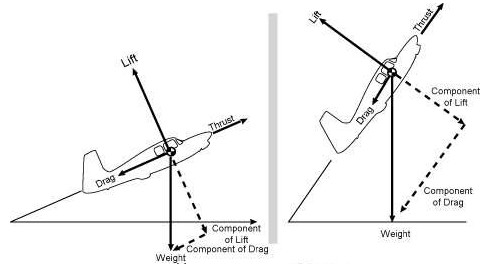LongRoadBob
Cleared for Takeoff
I find I am a little uncertain about some aspects of G-force.
Would it be correct to say that G is 1 when flying straight ahead, but any time one banks or climbs G > 1 ?
Similarly, coordinated and correctly executed descent, is still G = 1?
When we say "the wings are loaded" we are not necessarily meaning "there is lift" but rather there is excess lift? When the wings are loaded, we also are talking about G being greater than 1?
I was just paging through book on aerobatics (for fun...I'm nowhere near thinking about that now) and saw that in a loop correctly executed there would not be negativ G forces present anywhere in it, yet that also said that one could feel "light" in the seat during some parts.
I just am really unsure how to think og G forces, specially negativ G. Top of a climb-descend arc I would think might be in negative G (I mean they do this to simulate the weightlessness of space). but again. Something fundamental I am missing here.
Would it be correct to say that G is 1 when flying straight ahead, but any time one banks or climbs G > 1 ?
Similarly, coordinated and correctly executed descent, is still G = 1?
When we say "the wings are loaded" we are not necessarily meaning "there is lift" but rather there is excess lift? When the wings are loaded, we also are talking about G being greater than 1?
I was just paging through book on aerobatics (for fun...I'm nowhere near thinking about that now) and saw that in a loop correctly executed there would not be negativ G forces present anywhere in it, yet that also said that one could feel "light" in the seat during some parts.
I just am really unsure how to think og G forces, specially negativ G. Top of a climb-descend arc I would think might be in negative G (I mean they do this to simulate the weightlessness of space). but again. Something fundamental I am missing here.
Last edited:


